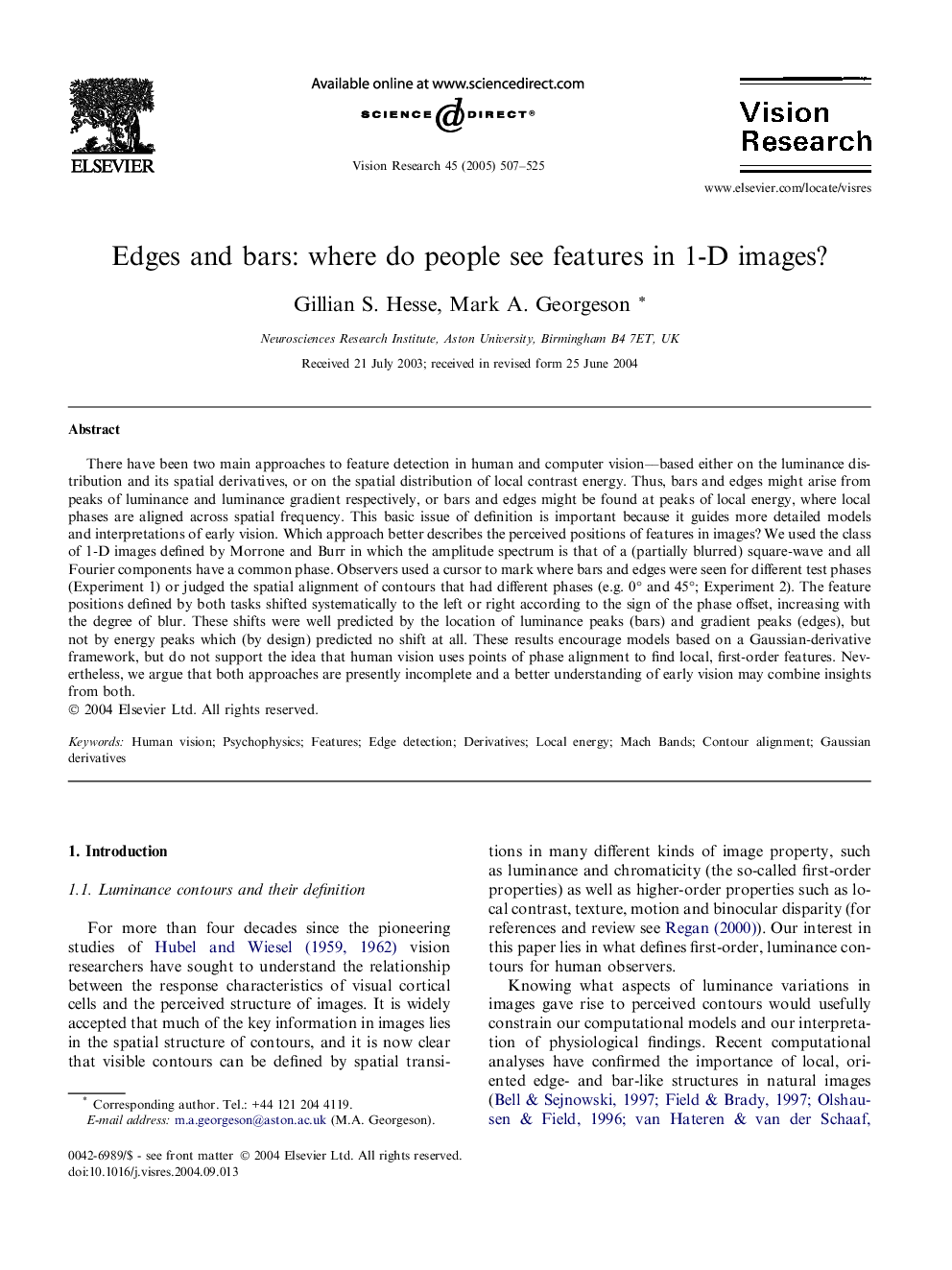| کد مقاله | کد نشریه | سال انتشار | مقاله انگلیسی | نسخه تمام متن |
|---|---|---|---|---|
| 9348712 | 1263623 | 2005 | 19 صفحه PDF | دانلود رایگان |
عنوان انگلیسی مقاله ISI
Edges and bars: where do people see features in 1-D images?
دانلود مقاله + سفارش ترجمه
دانلود مقاله ISI انگلیسی
رایگان برای ایرانیان
کلمات کلیدی
موضوعات مرتبط
علوم زیستی و بیوفناوری
علم عصب شناسی
سیستم های حسی
پیش نمایش صفحه اول مقاله

چکیده انگلیسی
There have been two main approaches to feature detection in human and computer vision--based either on the luminance distribution and its spatial derivatives, or on the spatial distribution of local contrast energy. Thus, bars and edges might arise from peaks of luminance and luminance gradient respectively, or bars and edges might be found at peaks of local energy, where local phases are aligned across spatial frequency. This basic issue of definition is important because it guides more detailed models and interpretations of early vision. Which approach better describes the perceived positions of features in images? We used the class of 1-D images defined by Morrone and Burr in which the amplitude spectrum is that of a (partially blurred) square-wave and all Fourier components have a common phase. Observers used a cursor to mark where bars and edges were seen for different test phases (Experiment 1) or judged the spatial alignment of contours that had different phases (e.g. 0° and 45°; Experiment 2). The feature positions defined by both tasks shifted systematically to the left or right according to the sign of the phase offset, increasing with the degree of blur. These shifts were well predicted by the location of luminance peaks (bars) and gradient peaks (edges), but not by energy peaks which (by design) predicted no shift at all. These results encourage models based on a Gaussian-derivative framework, but do not support the idea that human vision uses points of phase alignment to find local, first-order features. Nevertheless, we argue that both approaches are presently incomplete and a better understanding of early vision may combine insights from both.
ناشر
Database: Elsevier - ScienceDirect (ساینس دایرکت)
Journal: Vision Research - Volume 45, Issue 4, February 2005, Pages 507-525
Journal: Vision Research - Volume 45, Issue 4, February 2005, Pages 507-525
نویسندگان
Gillian S. Hesse, Mark A. Georgeson,